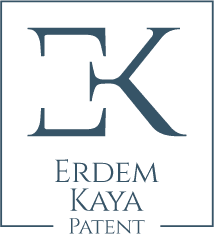“Intellectual properties are the spark plugs that turn a dormant, fixed, and intangible profit engine into a powerful and profitable one. Intellectual properties are the most powerful assets a company can possess. They can enable high sales prices, increase market share, ensure customer loyalty, and pose significant barriers to competitors.” (Russell Parr)
As this quote suggests, intellectual properties (such as trademarks, patents, utility models, designs, and copyrights) are among the most valuable assets of organizations. However, to truly benefit from intellectual property (IP), it is necessary to approach the subject with a strategic perspective.
Creating a Culture: The first step is to spread an intellectual property culture within the organization (awareness programs, reward systems, establishing idea attraction centers, etc.).
Establishing Systems: Another important step is to create a written policy on how intellectual properties will be managed within the organization and to communicate this to relevant internal and external stakeholders (strategy documents, intellectual property procedures, related system documents, etc.).
Evaluation: All ideas submitted by employees should undergo a thorough preliminary assessment in terms of registrability (preliminary searches, patent field reports, etc.) and the R&D process should be designed based on the outputs from this evaluation.
Creating an Inventory: It is essential to protect the intellectual properties that pass through this filter with a well-structured registration strategy to ensure that the value created by your intellectual effort is not wasted (trademark-patent registrations, copyright-know-how records, etc.).
Categorization: The intellectual property portfolio created through registration activities should be properly categorized (by importance, commercial potential, commercialization status, invention score, offensive/defensive/prestige purposes, etc.). This categorization will greatly aid in future analyses aimed at benefiting from the portfolio.
Maintenance: Annual maintenance of the intellectual property portfolio should be conducted with the support of the categorization (deciding which to continue, abandon, or transfer) and necessary actions should be taken accordingly. This also makes budget management more efficient.
Utilization: If you think of intellectual properties as just a piece of paper, you will miss the potential in your hands. However, you can always use this valuable asset within legal and ethical boundaries to achieve significant market advantages, such as managing perceptions, building reputation, intimidating/slowing down competitors, defending against legal attacks, and combating counterfeits uncompromisingly.
Valuation: At least the critical intellectual properties of the organization should be valued using scientific methodologies and the valued intellectual properties should be appropriately reflected in financial records (balance sheet footnotes, memorandum accounts, etc.).
Creating Synergy: To gain even more benefit from your intellectual property portfolio, consider it from perspectives such as tax exemption opportunities, IP-related incentives and supports, licensing opportunities, collaboration possibilities, or technology matching. Analyzing it with this mindset might yield unexpected and valuable outcomes.
Integrating into Strategy: When determining business strategies for technological investments, it is necessary to consider the parameters and data related to intellectual properties (identifying legal risks, patent-based competitor/sector analyses, trend/market determination studies through patent mapping, etc.).
In addition to these main points, it is highly important to work with an experienced, competent, and reliable Intellectual Property Consulting Firm (Patent Office) that can walk you through this process, which requires deep expertise in many stages. When choosing this consultant, approach it as you would when selecting your doctor, lawyer, or financial advisor.
I have tried to briefly outline the main framework of a topic that could be written about in thick books.
I hope I have been able to convey useful information.
Erdem Kaya






